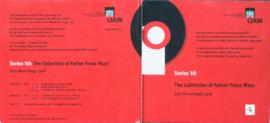Parkington, Cronin and Poggenpoel 1974
- Subseries
- 2016 -
Part of FHYA curation of a selection from the uMgungundlovu Archaeological Material at AMAFA
[Source - Chloe Rushovich for FHYA using material provided by eThembeni Cultural Heritage Management, 2018: In 1974 and 1975 members of the Archaeology Department of the University of Cape Town (UCT), led by Parkington, Mike Cronin, Cedric Poggenpoel, and Heinz Ruther, a survey specialist, explored the size and layout of the site and excavated. Parkington noted to the FHYA that his primary interest in the site related to the organisation of space. They were further assisted by Jeremy Baskin, John Wright, Chrissie Sievers, Simon Hall, Polly Scott and Frank Silberbauer. In 1975 advice was also provided by Martin Hall and Tim Maggs. During these fieldwork periods, permanent datum points were established over an area of the hillside that probably contained the whole site. Some 184 daga floors were plotted and recorded photogrammetrically, and 36 were excavated as individual units. One half of the pit in the Bheje area was also excavated. Amafa Pietermaritzburg holds 40 large cardboard boxes of artefacts excavated in 1974 and 1975. This material includes thousands of fragments of diagnostic and adiagnostic pottery sherds; also, some beads; and a small quantity of fragments of adiagnostic teeth and bones. The KwaZulu-Natal Museum houses most of the Parkington and Cronin material from these excavations. The FHYA arranged this material into 1974 and 1975 ‘subseries’ in which ‘files’ containing digital ‘items’ which consist of the boxes and their contents.]





